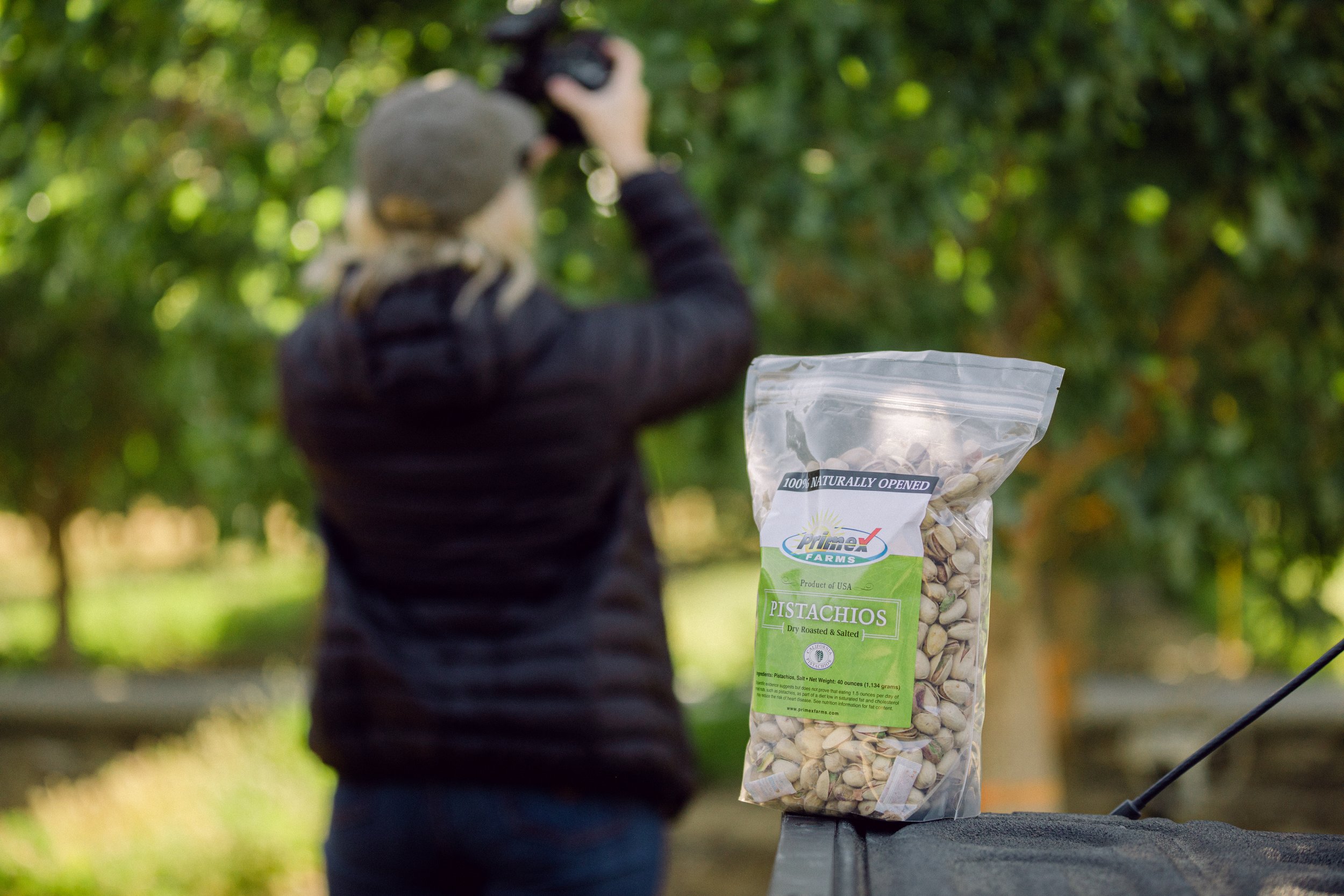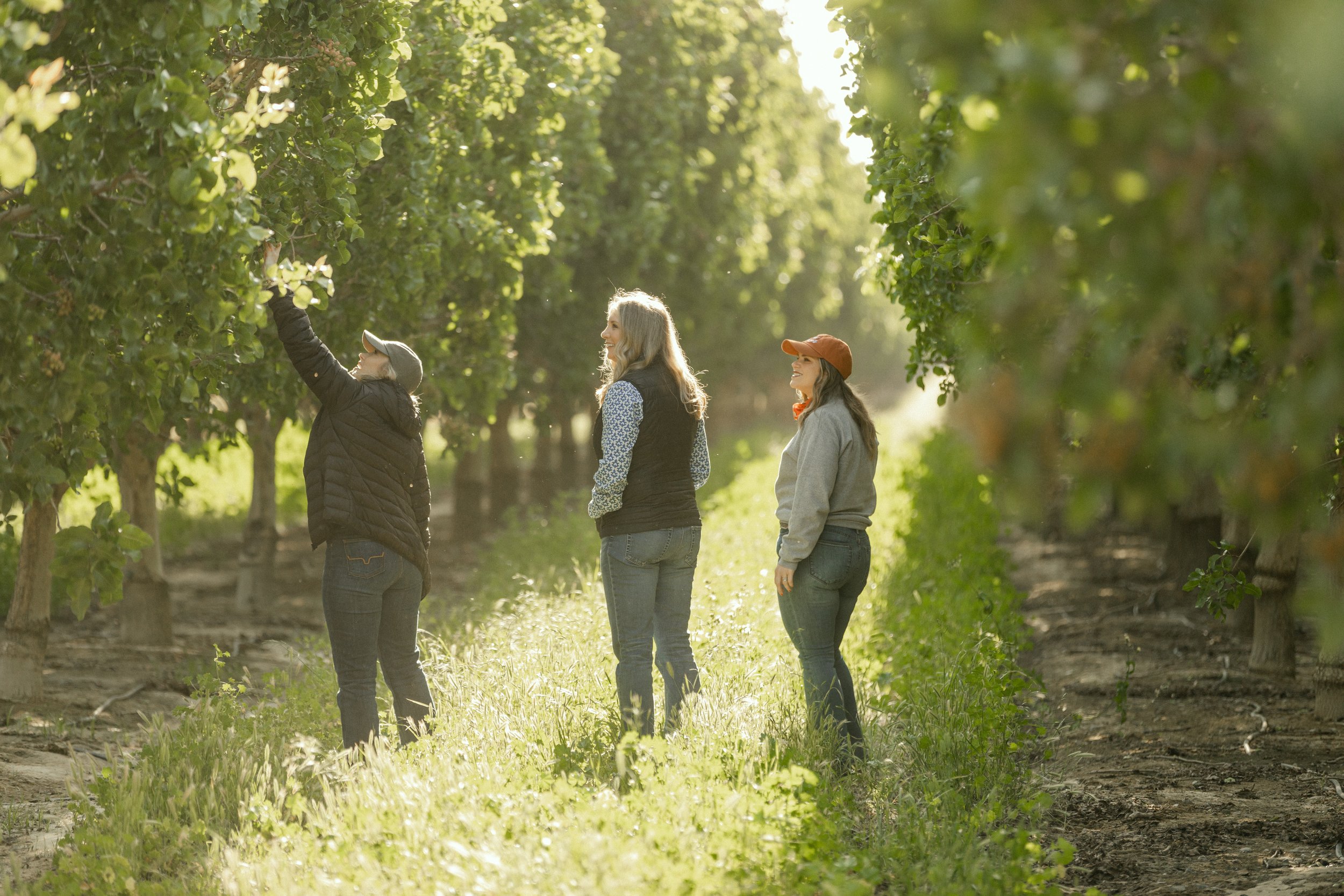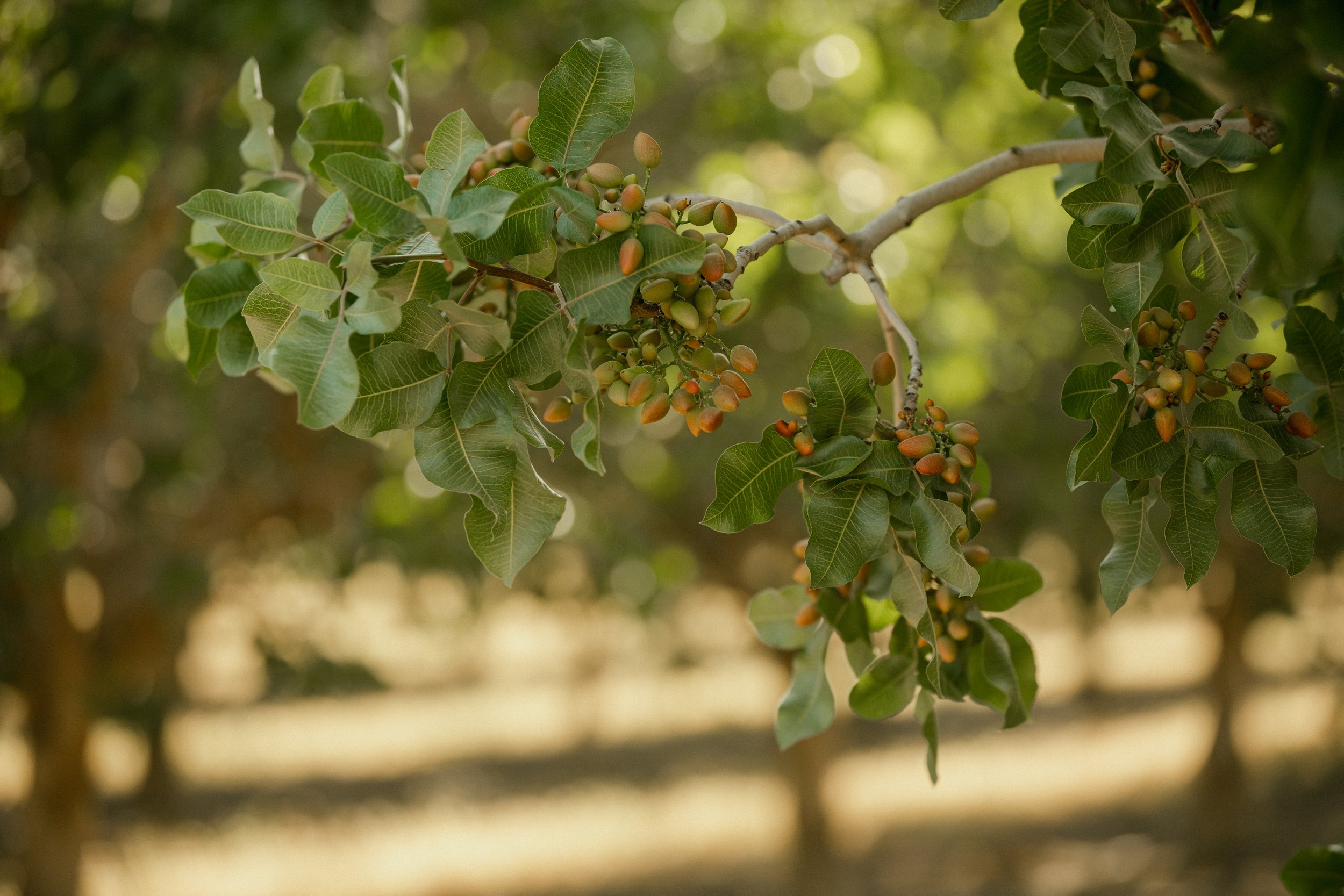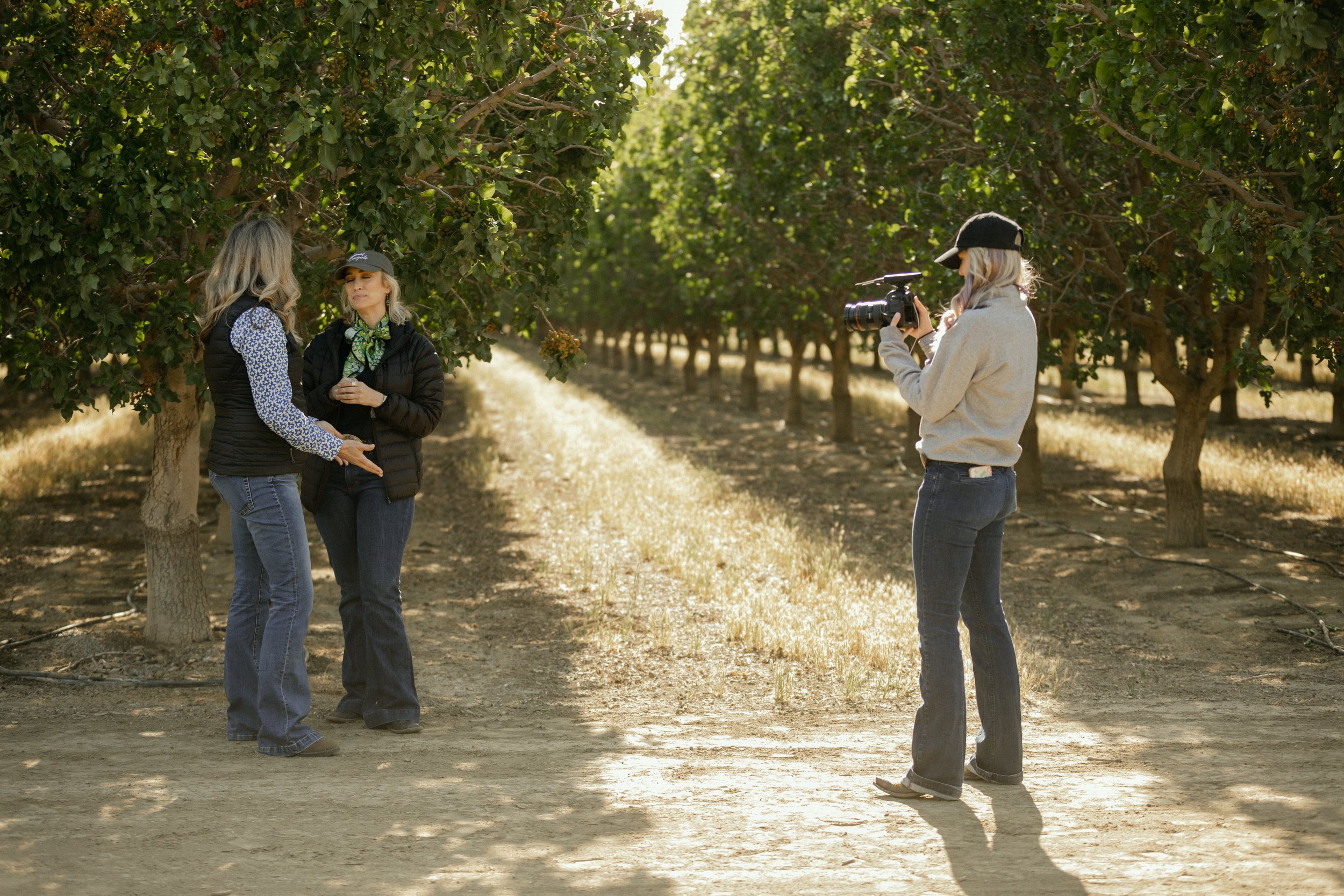
episode 10: Kristi Robinson
HURON, CALIFORNIA
KRISTI ROBINSON
grew up in the Central Valley of California as an only child. As the daughter of a farmer and granddaughter of dairy farmers, agriculture was all she ever really knew. She knew that at some point, her life would become farming, too.
In 1997, Kristi’s father Gary started his own pistachio farm from scratch. Pistachios were first brought to California in the 1960s from Iran. Commercial production didn’t start until the 1970s and has since grown to 400,000 acres statewide. In 2022, 1.1 billion pounds of pistachios were harvested in California. About 70% of the state’s production is exported overseas with the remaining 30% being consumed in the United States.
Kristi attended California Polytechnic State University, San Luis Obispo where she majored in Agriculture Business. She knew she didn’t want to run the farm full-time, but credits her series of jobs throughout her career for making her a better farmer and farm owner.
As the next in line to take over the farm, Kristi says there is a little bit of legacy and a desire not to let her father down.
“I think in the beginning I felt a lot of pressure, like I can’t let anybody down. I can’t ruin this. I think with age and having experience managing my own ranch, I feel more confident that’s not going to be what happens.”
Aside from owning the pistachio farm, Kristi has a day job working in agricultural water. In her role, she works with growers to help them acquire more surface water, assist with groundwater issues, and ensure they are compliant with the Sustainable Groundwater Management Act (SGMA) to be better able to farm sustainably.
Kristi says her region of California is in its third year of a drought. SGMA was put into place stating that the aquifers, underground water storage, cannot be overdrafted. Over the years their region has been pumping too much water for both agriculture and human usage. In years of excess water, they are now working to replenish those aquifers with recharge basins or wells.
As of now, water in Kristi’s area is selling upwards of $2,000 an acre/ft which is extremely pricey. “Water is a tough topic right now in the state of California and it’s going to be a tough topic for the next 15 years.”













FUN PISTACHIO FACTS:
If you plant a pistachio tree today, it won’t produce its first crop for 5-6 years and it would take 8-9 years to become commercially viable.
96% of any orchard is female trees and only 4% of the trees are male. Females produce the nut clusters whereas the males do not produce any nuts, their purpose being solely to provide pollen to the female trees.
Pistachios have a hull on the outside and inside is the embryo that grows into the nut. June is known as “nut fill,” when the pistachio grows big. In August-September, as it continues to grow the shell splits open. You know the nuts are ready to harvest when you’re able to slip the hull off with your finger. You can eat them right off the tree and they are called green pistachios!
Pistachios are a complete protein. Eating a handful of pistachios would be the equivalent of eating an egg. When you open a pistachio nut and see the colors in the skin, you’re actually looking at the many vitamins inside!
On the ranch, Kristi teases that she likes to wreak havoc. While working her day job, Kristi has a farm manager, Brian, who helps her with the day to day operation while she gives direction on marketing, where her pistachios are being sold, and works closely with him for the larger decisions.
When it comes to being a woman in agriculture, Kristi says,
“I think some of the benefits [of being a woman in ag] are that we’re underestimated. You can think of that as a con, but it really is a pro. They don’t expect a lot, but then you are able to get a lot more done. I’m efficient, I’m effective, I’m well spoken. I read a lot because I don’t have all the information. I do all my research and I think that really surprises them sometimes.”
The BACKROAD COWGIRLS
are so grateful for all the wisdom and insights Kristi shared with us about pistachio production and water issues in California. She was even gracious enough to send us home with some snacking nuts and pistachio products to enjoy for the rest of our road trip!
Brought to you in partnership with:
Photography by Shelby Caitlin Photography










